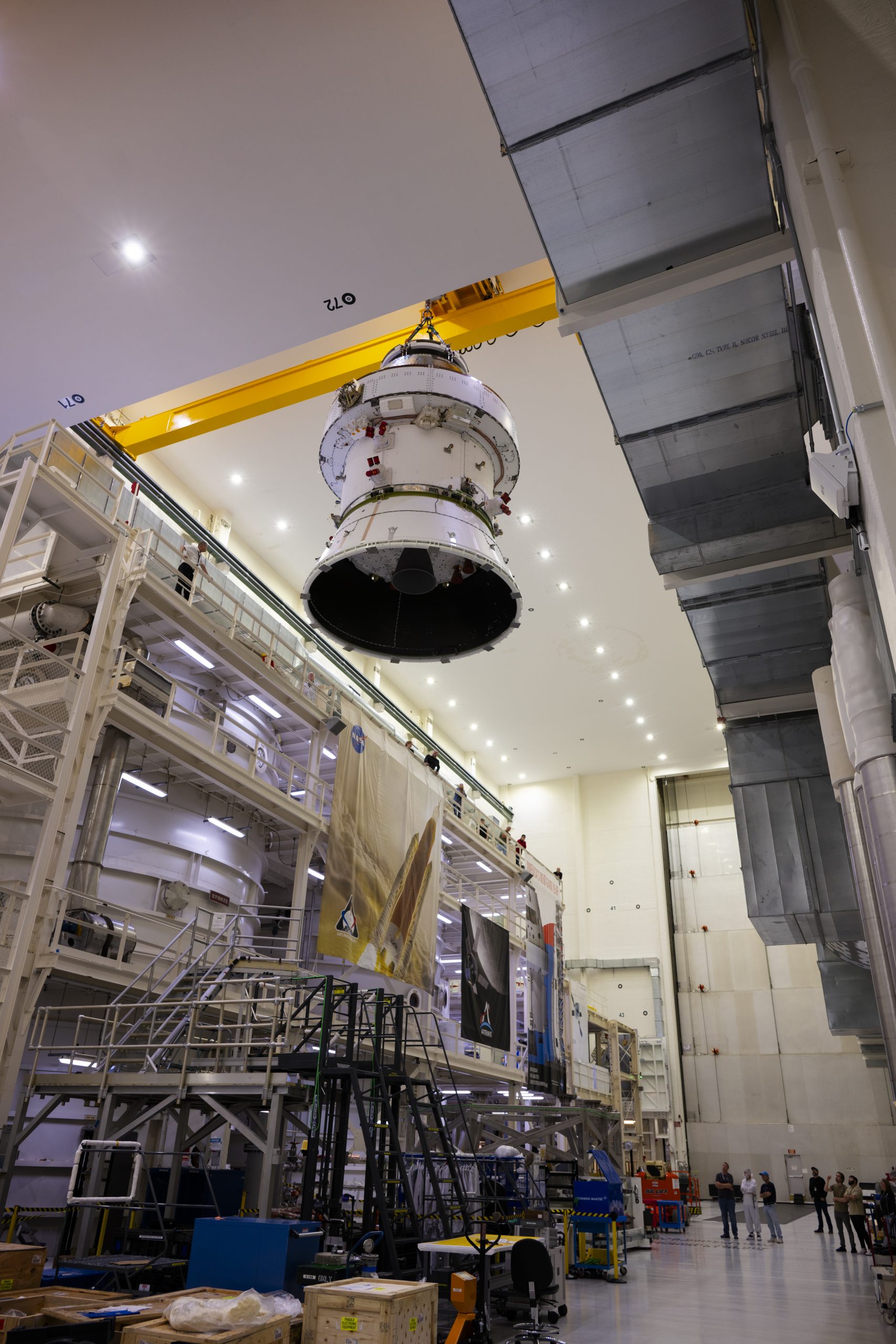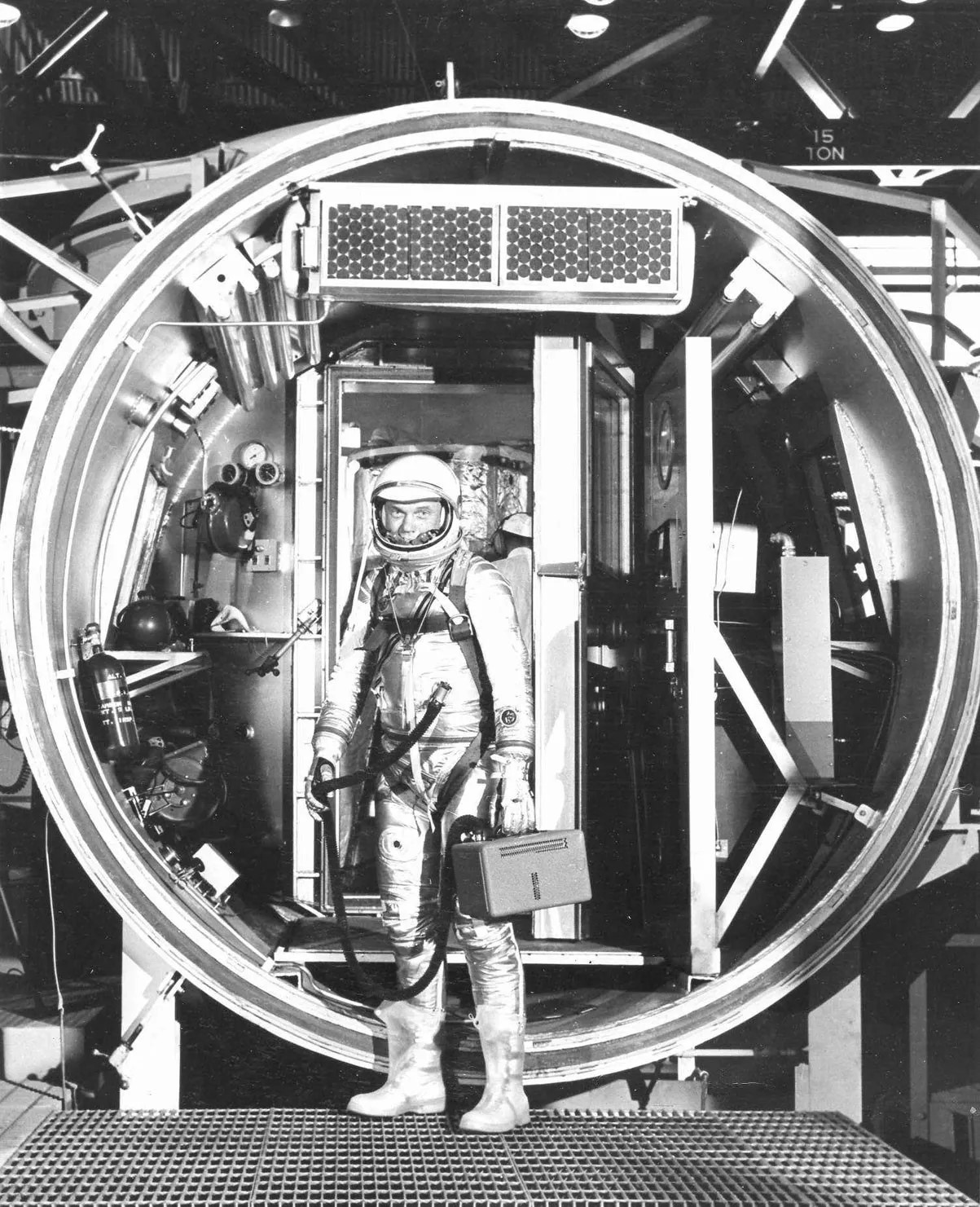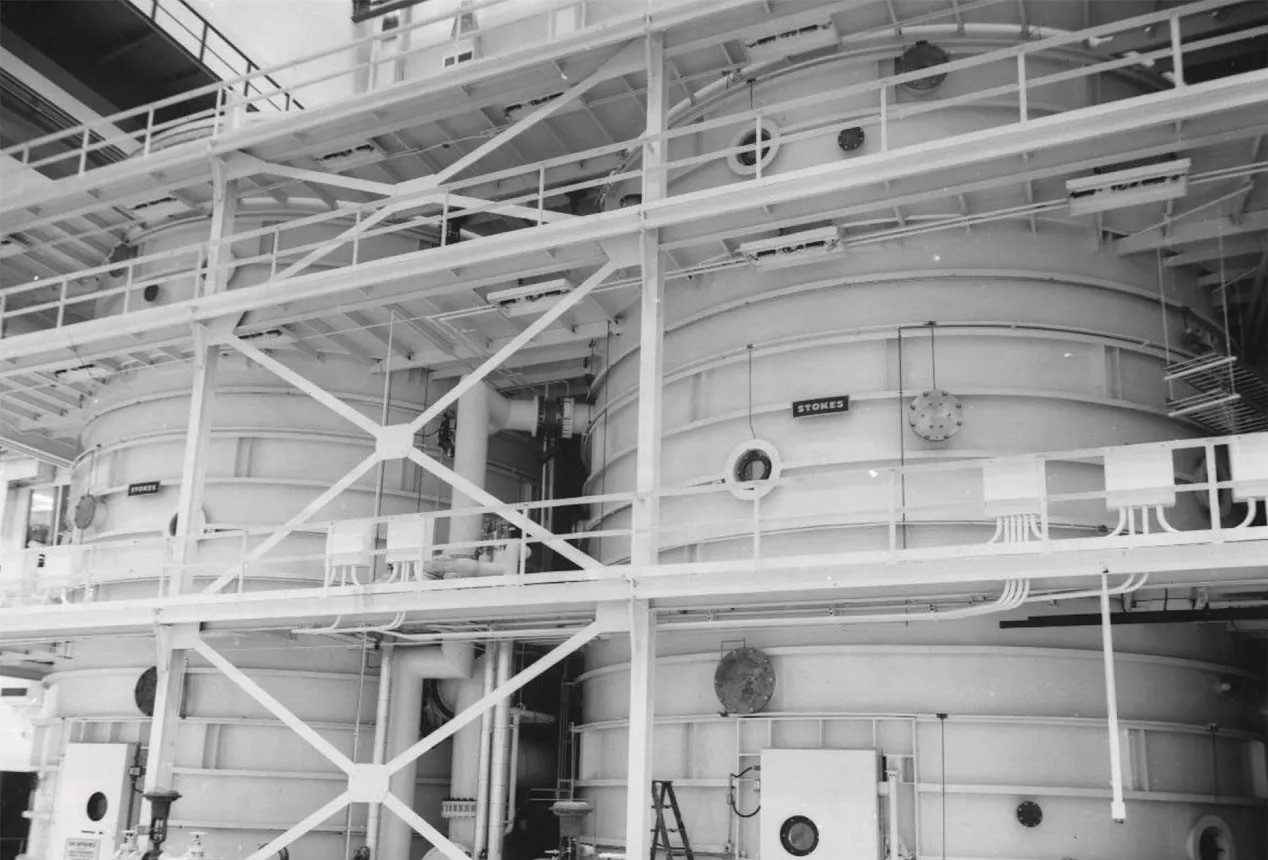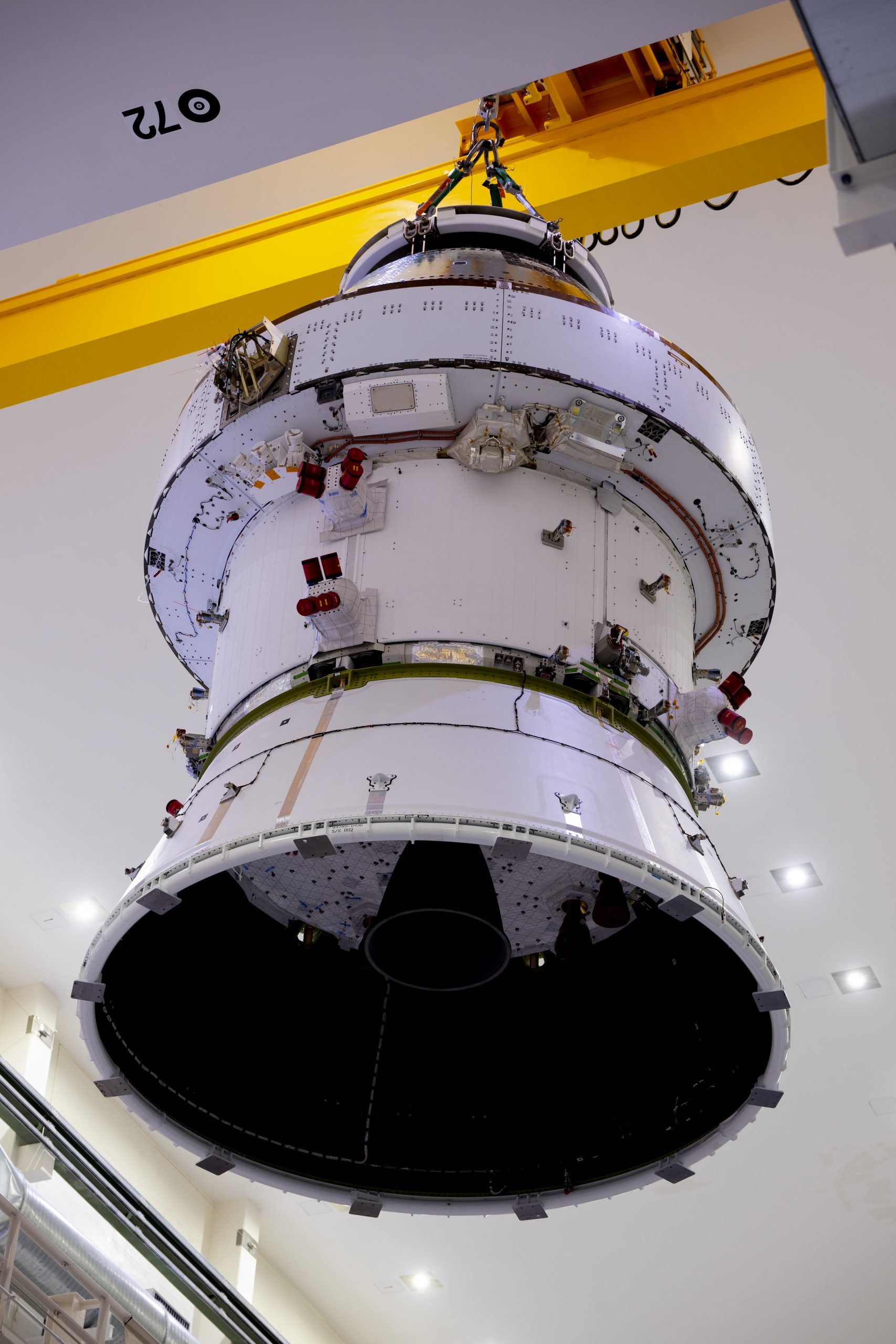The Orion vehicle that will bring astronauts around the Moon and back for the first time in over 50 years was recently tested in a refurbished altitude chamber used during the Apollo era.
The Orion stack, made of the crew module, crew module adapter, the second European Service Module and spacecraft adapter, was lifted into one of two altitude chambers on 4 April at the Neil Armstrong Operations and Checkout Building at the Kennedy Space Center, Florida, USA.

The Orion vehicle was lifted out of the west altitude chamber last weekend at the Neil Armstrong Operations and Checkout Building.
Credit: ESA-S. Corvaja
Over the past weeks, the vehicle has undergone tests in a refurbished altitude chamber that was used over half a century ago to test the environmental and life support systems of the lunar and command modules of the Apollo missions. The testing of Orion for Artemis II marks the first time since Apollo that a spacecraft designed for human exploration of space has entered the chamber for testing.

View of the altitude chambers inside the Neil A. Armstrong Operations and Checkout (O&C) Building at Kennedy Space Center in Florida.
Credit: NASA/ACI-P. Rogo Bailes
Testing, testing…
Two types of tests have taken place over the last days: electromagnetic interference (EMI), which monitors how Orion reacts to external sources, and electromagnetic compatibility (EMC), which checks how parts of Orion affect each other electromagnetically.

Top view of the Artemis II Orion spacecraft inside the altitude chamber.
Credit: NASA-D. Wellendorf
The EMI and EMC tests consist of placing antennas around the spacecraft that fill the chamber with a certain frequency of electromagnetic radiation and then checking that the subsystems of the vehicle operate as they should; this is then repeated for several different frequencies. The chosen frequencies replicate conditions the Orion vehicle might face during its mission, like the frequencies experienced during the rocket launch or from a transmitter on the vehicle.

View of the altitude chambers inside the Neil A. Armstrong Operations and Checkout (O&C) Building at Kennedy Space Center in Florida.
Credit: NASA/ACI-P. Rogo Bailes
These tests also checked the spacecraft for electromagnetic frequencies that could be induced by the lunar Gateway station. The station will be built around the Moon later this decade after the Artemis II mission, so this Orion will not visit the Gateway. However, Orion vehicles destined for future Artemis missions will dock to the lunar station, so these capabilities are already being tested today.

ESA is contributing three key elements to the Gateway: Lunar I-Hab, Lunar View and Lunar Link. Together, these provide a habitable space for astronauts, refueling, storage and telecommunication capabilities, and windows to view space and the Moon. Credit: NASA
What’s next?
The journey continues for the Orion vehicle as it is tested up to its expected launch in 2025. The vehicle will return to the same altitude chamber this summer for vacuum testing and later the Orion stack for Artemis II will receive its final component: its four, seven-metre-long solar arrays that the European Service Module will use to power the vehicle and its crew of four towards the Moon and back.

The engine of the second European Service Module that will power this Orion in space has already flown on several Space Shuttle missions.
Credit: ESA-S. Corvaja

The journey for Orion continues…
Credit: ESA-S. Corvaja

 Automated Transfer Vehicle page
Automated Transfer Vehicle page ATV blog archive
ATV blog archive
Discussion: one comment
Thank you, Marie, for the blog.
It is greatly encouraging and thrilling to learn about the Orion and Artemis project!
It brings people together, to make a dream (Jules Verne’s and soo many others after him) come true – and it is peace work in the best of senses!
Will follow the progress and the wonders of space travel and exploration with enthusiasm, to discover in fact the wonders of ‘beyond Earth’!